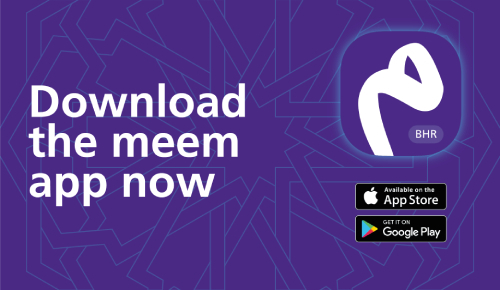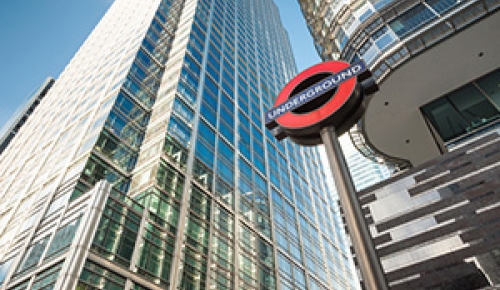Press Releases
BackGulf International Bank reports 2018 half year financial results
- Bank continues to deliver on strategy of business diversification and expansion
- Moves closer to establishment of KSA subsidiary
- Reinforces presence in Bahrain with launch of meem digital retail banking offering
Gulf International Bank B.S.C. (GIB) today announced its financial results for the half year ended 30th June 2018. Net income before provisions and tax for the six month period increased by 50 per cent to $89.8 million compared to $60.0 million in the prior year period. The year-on-year increase resulted from continued growth in the Bank’s broad range of business activities. The result for the first six months of 2018 also benefited from a $26.5 million recovery on a previously written off loan.
After an exceptional provision charge of $229.0 million, a net loss of $144.2 million was recorded in the first half of the year compared to net income of $53.3 million in the prior year period. The provisions related to challenging macro-economic conditions, which have impacted the business environments of several GCC countries in which the Bank operates. This contributed to a number of borrowers experiencing stressed financial circumstances, resulting in an increase in past due loans in the second quarter of 2018, after a prolonged period of a relatively stable level of past due loans. Consistent with GIB’s prudent approach to provisioning, increased and new provisions were proactively made in the context of the increase in past due loans in the second quarter of the year. This action increased the provisioning coverage for past due loans to above 100% at the half year end, thereby maintaining an excess of provisions over and above the level of past due loans. The net loss after provisions for the second quarter was $170.0 million compared to net income of $31.7 million in the prior year period.
Total income for the six months increased by 23 per cent to $215.4 million compared to $175.6 million in the prior year. The growth in total income was largely attributable to growth in net interest income and other income. Net interest income increased by 16 per cent to $137.4 million from $118.4 million in the prior year period, reflecting ongoing growth in the wholesale banking lending activity, positive progress in the implementation of the new global transaction banking strategy contributing to a lower funding cost for the Bank, and a more favourable funding and liquidity environment. Other income of $29.9 million for the six months benefited from the $26.5 million recovery on a previously written off loan. This conforms with the Bank’s persistence in seeking recoveries even where loans have been fully provisioned or written off.
Total expenses for the six months were $125.5 million compared to $115.6 million in the prior year period. The year-on-year increase in expenses was attributable to costs associated with further progress in the implementation of the Bank’s business strategy, including the planned KSA subsidiary, as well as the IT infrastructure to support new innovative products and services.
Consolidated total assets at the half year grew 9 per cent reaching $27.7 billion compared to $25.5 billion at the end of 2017. The Bank’s asset profile continued to reflect high levels of liquidity with cash and other liquid assets, securities purchased under agreements to resell, and short-term placements totalling $12.7 billion or 46 per cent of total assets. GIB also recorded a $2.5 billion or 16 per cent increase in deposits from customers during the first half of 2018. Total equity at the half year amounted to $2.3 billion, representing 8.3 per cent of total assets, a ratio that is relatively high by international comparison. A $107.7 million decrease in total equity during the first half of 2018 comprised the net loss for the period, partly offset by positive fair value movements recorded in the statement of comprehensive income.
Commenting on the results, Dr. Abdullah bin Hassan Alabdulgader, Chairman of GIB, said, “We are pleased with the growth that GIB has exhibited during the first half of 2018. The Bank reported a strong increase in underlying operating income and profitability before exceptional provisions, which we expect will help GIB strengthen its financial position and allow the Bank to focus on its growth and expansion strategy as well as progress in becoming a leading pan-GCC universal bank. With a well-diversified business, strong asset quality and a high level of liquidity, as recently reaffirmed by international rating agencies, we are now firmly focused on the future. Importantly, we are also in the final stages of completing the necessary activities to convert our branches in Saudi Arabia into a locally incorporated subsidiary, deepening our presence in other core regional and global markets, and ensuring the Bank is optimally structured to enhance performance and profitability.”
Mr. Abdulaziz bin Abdulrahman Al-Helaissi, Group Chief Executive Officer of GIB, added, “Our results for the first six months of the year underscore the continued momentum in the business. Substantially higher levels of income before provisions as well as healthy increases in loans and customer deposits are all signs of success in the diversification initiatives that GIB is actively pursuing. The second quarter of the year was also marked by a number of important milestones including the launch of meem Bahrain, our first retail banking operation in the Kingdom. meem is the first digital banking offering to be established in Bahrain and we are pleased with the very strong uptake we have received to date. We are also gratified by the continued confidence of our shareholders in GIB, as we head closer to establishing our subsidiary in Saudi Arabia, a move that will allow us to better leverage our presence and the vast growth potential the Saudi market holds for the Bank. Going into the second half of the year, we are working hard to build on the progress we have made and to deliver stronger results in line with the expansion of our business mix and geographic footprint.”







